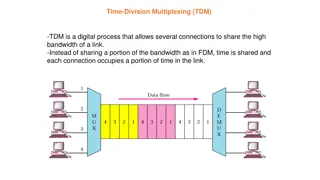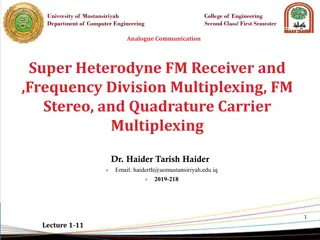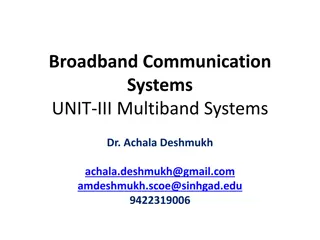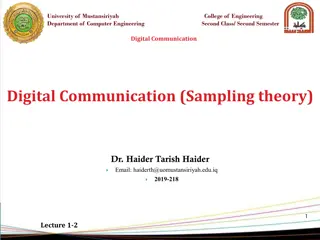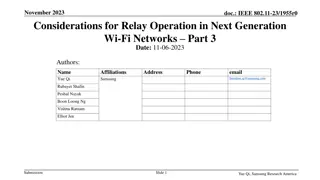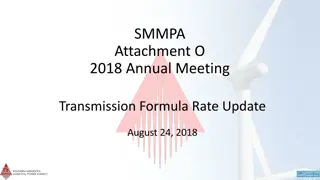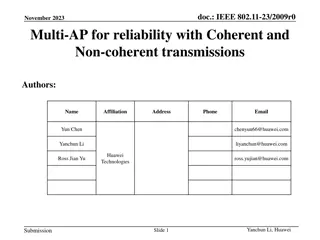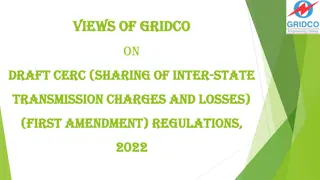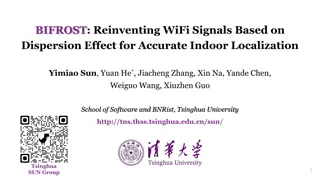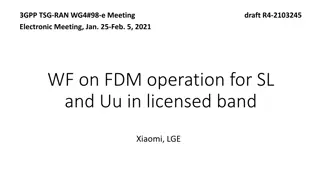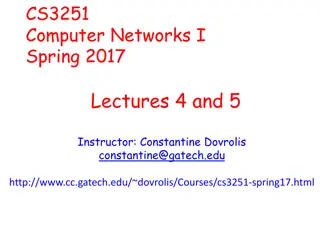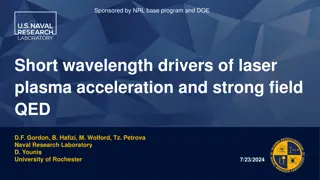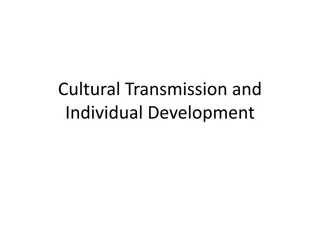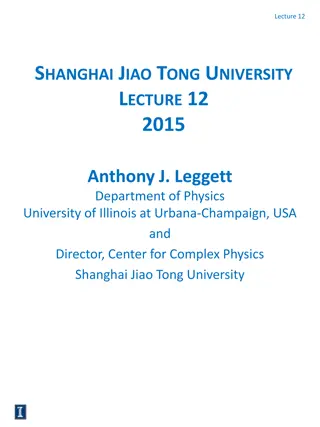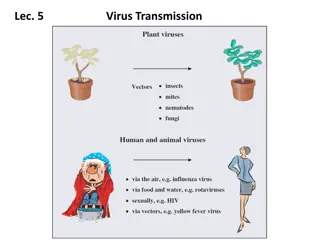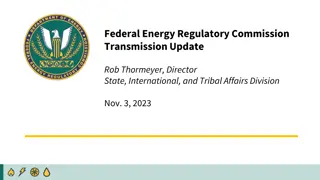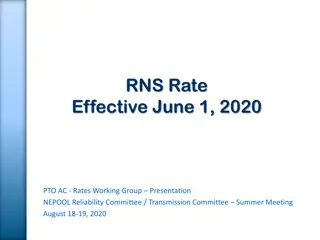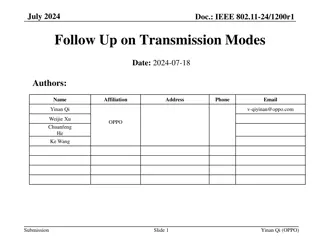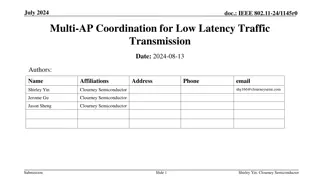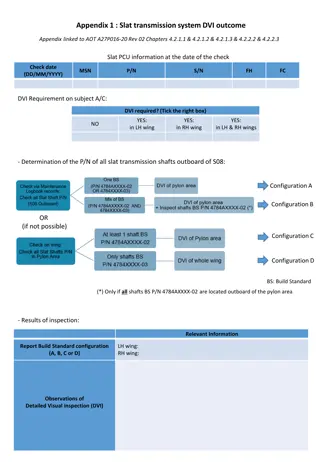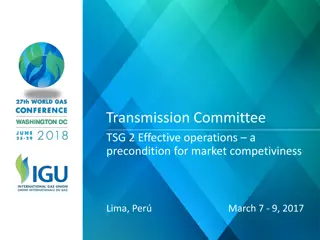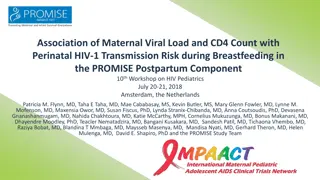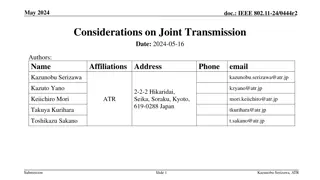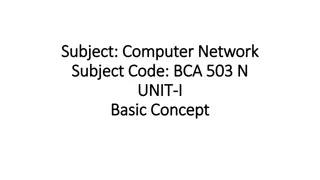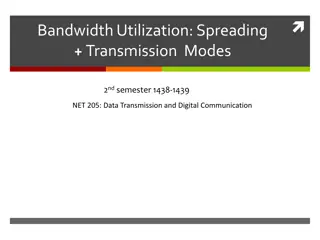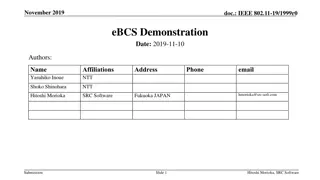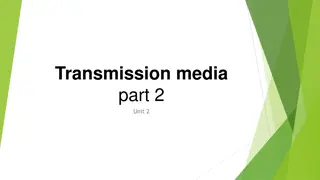Understanding Multiplexing in Data Transmission
Multiplexing is a vital technique that enables multiple signals to be transmitted simultaneously across a single data link. This process optimizes bandwidth usage by allowing different devices to share a common link efficiently. Frequency-division Multiplexing (FDM) and Time-division Multiplexing (TDM) are key categories of multiplexing methods that ensure efficient data transmission. Through multiplexers and demultiplexers, signals are combined and separated, respectively, to facilitate effective communication between connected devices.
Download Presentation

Please find below an Image/Link to download the presentation.
The content on the website is provided AS IS for your information and personal use only. It may not be sold, licensed, or shared on other websites without obtaining consent from the author. Download presentation by click this link. If you encounter any issues during the download, it is possible that the publisher has removed the file from their server.
E N D
Presentation Transcript
Multiplexing Dr. Husam Akif Al-Ameen
Whenever the bandwidth of a medium linking two devices is greater than the bandwidth needs of the devices, the link can be shared. Multiplexing is the set of techniques that allows the simultaneous transmission of multiple signals across a single data link. If the data traffic increased, we can : - Add individual links - Install higher-bandwidth links If the bandwidth of a link is greater than the bandwidth needs of the devices connected to it, the bandwidth is wasted
In a multiplexed system, n lines share the bandwidth of one link. The lines on the left direct their transmission streams to a multiplexer (MUX), which combines them into a single stream (many-to-one). At the receiving end, that stream is fed into a demultiplexer (DEMUX), which separates the stream back into its component transmissions (one-to- many) and directs them to their corresponding lines
Categories of Multiplexing Multiplexing Analog Digital Frequency-division Multiplexing (FDM) Time-division Multiplexing (TDM) Synchronous Asynchronous
Frequency-Division Multiplexing (FDM) FDM is an analog technique that can be applied when the bandwidth of a link is greater than the combined bandwidths of the signals to be transmitted. In FDM, signals generated by each sending device modulate different carrier frequencies. These modulated signals are then combined into a single composite signal that can be transported by the link. Carrier frequencies are separated by sufficient bandwidth to accommodate the modulated signal. These bandwidth ranges are the channels through which the various signals travel. Channels can be separated by strips of unused bandwidth (guard bands) to prevent signals from overlapping. In addition, carrier frequencies must not interfere with the original data frequencies. FDM can be used to combine sources sending digital signals. A digital signal can be converted to an analog signal before FDM is used to multiplex them.
Demultiplexing Process The demultiplexer uses a series of filters to decompose the multiplexed signal into its constituent component signals. The individual signals are then passed to a demodulator that separates them from their carriers and passes them to the output lines.
Example 1: Assume that a voice channel occupies a bandwidth of 4 KHz. We need to combine three voice channels into a link with a bandwidth of 12 KHz, from 20 to 32 KHz. Show the configuration, using the frequency domain. Assume there are no guard bands. Solution : We shift (modulate) each of the three voice channels to a different bandwidth. At the receiver, each channel receives the entire signal, using a filter to separate out its own signal.
Example 2: Five channels, each with a 100-KHz bandwidth, are to be multiplexed together. What is the minimum bandwidth of the link if there is a need for a guard band of 10KHz between the channels to prevent interference? Solution : For five channels, we need at least four guard bands. This means that the required bandwidth is at least 5 x 100 + 4 x 10 =540 KHz.
Applications of FDM - A very common application of FDM is AM and FM radio broadcasting. Radio uses the air as the transmission medium. A special band from 530 to 1700 KHz is assigned to AM radio. All radio stations need to share this band. - Each AM station needs 10KHz of bandwidth. Each station uses a different carrier frequency, which means it is shifting its signal and multiplexing. - The signal that goes to the air is a combination of signals. A receiver receives all these signals, but filters (by tuning) only the one which is desired. - There is no need for a physical multiplexer or demultiplexer. As long as the stations agree to send their broadcasts to the air using different carrier frequencies, multiplexing is achieved.


